ISSN ONLINE(2319-8753)PRINT(2347-6710)
ISSN ONLINE(2319-8753)PRINT(2347-6710)
Usman Waziri1, Mohammed Joda Usman1, Abdulrauf Garba2 and Wadzani A. Gadzama3
|
| Related article at Pubmed, Scholar Google |
Visit for more related articles at International Journal of Innovative Research in Science, Engineering and Technology
With advances in information and communication technology, online transaction over the Internet has become an integral part of day to day life. An online census is the web-based application which allows respondents to complete the census via the internet. This paper aims at upgrading and integrating the efficiency of census data collection management system. Traditionally, census data collection demands an authorized enumerator, who collects the census data manually which is time consuming and waste of resource. A secure online census system based on B/S structure can overcome these problems. MyEclipse was used as an integrated environment for development of webbase system and JSP, were served as the programming language. SQL server (2005) served as a relational data base. By adopting the idea of differential equation and exponential function the system can predict the future population of the country that will encourage cooperation and collaboration among federal agencies.
Keywords |
| Application, Census, Enumerator, Population, Programming. |
INTRODUCTION |
| The approached of web-base system really globalizes the world to the easiest life such as e-shopping, e-health, e-books, e-banking and so on. An online census is the web-based application which allows respondents to complete the census via the internet. By being online it means it is available and free of charge to anyone, user friendlier and widely accessible across the world. The term census can be defined as the total process of collecting, compiling and publishing demographic, economic and social data pertaining to all persons in a country at a specified time [1]. In Nigeria census data collection, generally these steps are to be followed: Identifying the houses i.e., dwelling places and places that are usually used for living like sheds that are used by nomads. This is the first step. Then the enumerator prepares the house list. Once the house list is prepared the enumerator prepares sketches of blocks of houses that give the primary information about the type of houses and facilities that are being enjoyed by the population in that area. The house list acts as the frame work for the next step of enumeration. Enumerator reports to supervisor and supervisor reports to the charge officer and charge officer reports to the area officer, area officer reports to zonal officer and zonal officer to state commissioner. The state commissioner reports to the chairman national population commission of Nigeria [2]. |
| The above system is a very traditional method and involves many difficulties. Now-a-days in this fast world of technology it is very important to complete a work in a speedy manner. This is made possible by adopting secure online census information management system based on browser-server structure. The browser-server demands security for confidentiality, integrity and availability. This proposed system satisfies various security requirements such as verifiability, accuracy, uniqueness and finger prints in order to eliminate redundancy and duplication. This bright plan will complement the effort of the Nigerian government to make informed decisions for policy and planning, the obtained census data is commonly used for research, business, marketing, national budget and preparing for future. |
RELATED WORK |
| The absence of virtually any reliable current census data collections has not prevented national and international bodies from generating estimates and projections of population growth in Nigeria. Many approaches have been widely investigated toward solving census related challenges. A recent research in Nigeria, secured census information management system [3]. Another work discussed the putting of census information on the web for access, by applying the internet as an information dissemination tool [4]. An online internet based application for census counting was presented in another work [5]. Biometrics has been applied and integrated into information systems in some studies [6]. Another study reinforced the need for an efficient land use planning, and represented the first approach integrating satellite imagery with population census data for studying the human environment in the Caribbean [7]. The processes put in place to provide an internet option to the Australian public at the 2006 Census, was briefly outlined in another work [8]. Another work describes India census data collection using PDA, which is the design and implementation of census Data collection system using PDA [9]. Voter Privacy which is one of the main security issues in the election process can be guaranteed by using blind signatures for confidentiality and voter's digital signature for voter's authentication [10] [11][12]. However, most of these approaches are yet to success in providing an update census data. This Paper aim at developing a secure online census information management system (OCIMS) based on Browserserver structure, user- friendlier and widely accessible to users, taking advantage of new technologies to better meet the purpose. It was suggested that every effort be made to reduce the number of inaccuracy and manual method in the area of census data collections. |
BROWSER-SERVER |
| Browser-Server is internet access to the server and can be either open to all or limited access to those with passwords and or privileges (such as a company server) etc. This could be a private server but with internet based access rather than LAN (Local Area Network) access. The server has a three-step response to a client. First, it accepts the connection, and then it reads and processes the clientâÃâ¬ÃŸs request. Finally, it sends a reply to the client. For some client-server relationships, like a database server, there may be multiple requests and replies. Since database requests may take a long time to process, the server must be multi-threaded in order to handle concurrent requests. In the case of HTTP, a single request will lead to multiple replies [14][15]. |
Why Browser-Server Structure |
| BSS which is so-called Browser-Server Structure of the biggest advantages is that you can in any place operate it without having to install any special software. As long as there is a computer with internet access one will be able to use the client zero maintenance. The expansion of the system is very easy, as long as there is access to the Internet, and provides a user name and password, you can use the application. |
Browser-Server Structure Architecture |
| B/S structure is three-layered Browser-Web server-Database Server structure in essence. The browser which serves as client software is responsible for displaying information and data collection, and communicating with web server through Internet, realizing the interaction of information between users and systems. Web server which is in charge of the main application processing tasks is responsible for business logic operation of all sorts of function modules and information issues including HTTP(Hyper Text Transfer Protocol) request and connection and interaction with database server. Database server is responsible for storage and management of system data as shown in Fig. 1: |
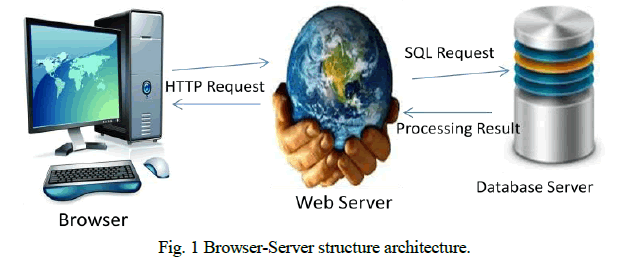 |
| As shown in Fig. 1, client runs browser software, and browser proposes requirements of accessing database in hypertext forms. After received by Web server, request will be converted to SQL (Structural Query Language) statement and submitted to the database server. Database server verifies its validity and deals with the data, and then returns results back to the Web server. Web server handles data to logic operation of various functions according to the demand, and eventually transfers the results. |
MATERIALS AND METHODS |
| Data Collection |
| Data was collated by conducting discrete census activity with some selected categories of people within some selected regions of the Azare, Bauchi State Nigeria. Azare is located in Katagum local government of Bauchi state. We tested our system with few data for a start. About 25-50 individuals were counted with our application and the results were promising. These different individuals were registered based on the bio-data based application in order to guarantee security and a safer census activity. |
| System Design Architecture |
| The system must be portable and extendable to accommodate future changes in hardware, software and networking. Keeping in view these factors, the solution Nigerian Population has developed is based on two components: the server side and the enumerator side, which runs on the browser. The server is a set of applications that serve the requests made by an enumerator. Data server which is responsible for managing tabular data at the server side and sending the information to the client. This system is viewed in any standard web browser. The advantage of this approach that there is no need to download any plug-ins on the client side. The performance of the system is measured by the ability to respond to requests faster, and the reliability of the system. Typically, the response to a certain query must not take longer than 25 second. The overall system performance is dependent on the combination of browser, server and networking performance, not the individual components, and is controlled by the weakest component within the total solution. In this phase of the project, one server machine is used for the functionality of the web server and data server, which are installed together. The diagram below illustrates a general view of the system design architecture. |
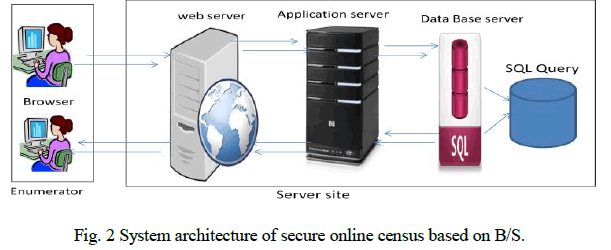 |
| The above system is 3-tier architecture by inserting another program at the server level. We call this the server application. Now the client application no longer directly queries the database; it queries the server application, which in turn queries the data server. The advantage of this system, when the enumerator wants to register or retrieve data the following happens: The enumerator on browser asks the web server, the web server asks the server application and the server application queries the data server, the data server serves up a recordset with all the populationsâÃâ¬ÃŸ data. The server application does all the processing to determine the data and serves up the final data to the web server. The web server displays the final data information to the enumerator. The three tiers in three-tier architecture are: |
| 1. Web server known as Presentation Tier: it interacts closely with the user. Occupies the top level and displays information related to services available on a website. This tier communicates with other tiers by sending results to the browser and other tiers in the network. |
| 2. Application server known as Application Tier: Also called the middle tier, logic tier, business logic or logic tier, this tier is pulled from the presentation tier. It controls application functionality by performing detailed processing. |
| 3. Data server also known as Data Tier: This is the most critical aspect of the application; it is where the user data, operational data and metadata are stored for easy access and retrieval. Houses database servers where information is stored and retrieved. Data in this tier is kept independent of application servers or business logic. Thus, a database is an organized collection of structured data, to serve many applications with minimum redundancy. |
System Design and modelling |
| System design is the creative process of transforming a real-life problem into a solution. This is done through the description of the structure of the software to be implemented, data which is part of the system, and the interfaces between system components. For this system, the structure will be represented through its logical design and functional decomposition. The logical design specifies the methods of interaction of system components like the input and outputs, menu structures, procedures, controls and functions and command structures. For this census information management system, it comprises of three essential modules, namely: the enumerator module, the system administration module and the census registration module. As shown in Fig. 3 below. While a decomposition diagram shows a top-down functional decomposition of a system and exposes the system's structure. The objective of the Functional Decomposition is to break down a system step by step, beginning with the main function of a system and continuing with the interim levels down to the level of elementary functions. As shown in figure 4 below; |
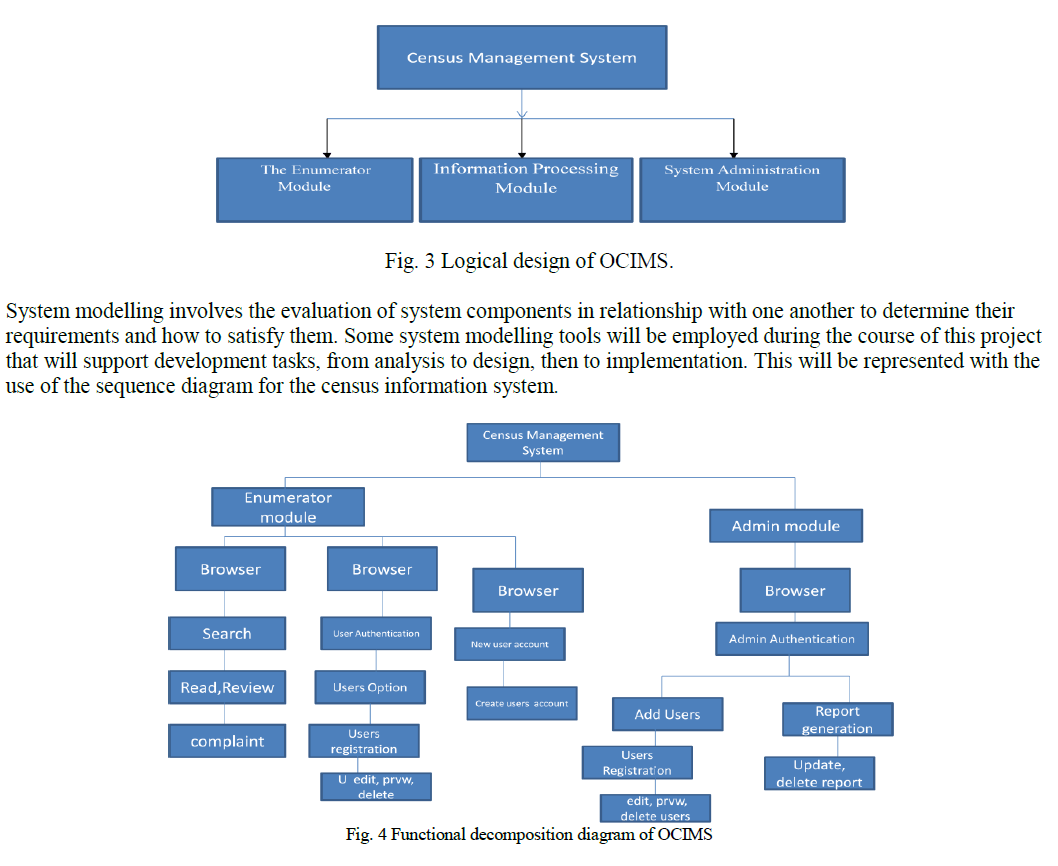 |
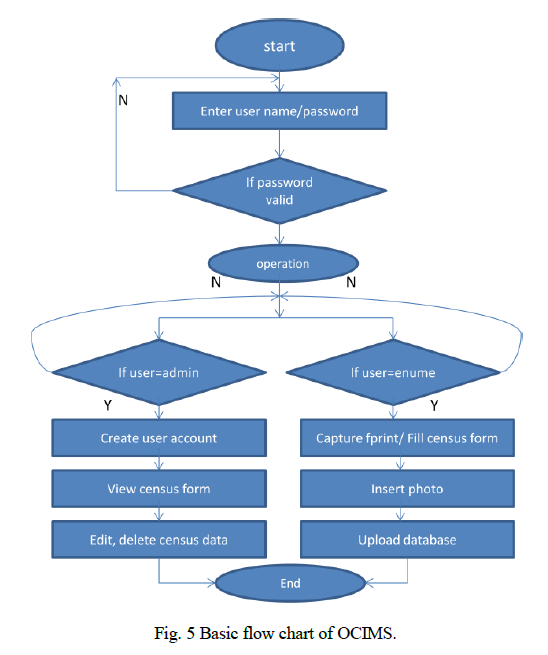 |
| Implementation |
| We have used the MyEclipse Integrated Development Environment as it provides an excellent way of developing the modules and adding library easily. The deployment of the servlet and applets on a web server is easy using MyEclipse and JSP were served as programming language. It was easy to integrate it with Microsoft SQL Server; Microsoft SQL Server (2005) is a relational database management application that handles robust and complex data rather effectively. |
RESULTS AND DISCUSSION |
| The online census management system helps to ensure the conduct of a good and credible census program throughout the nation. This system comprised of many modules, some these are: |
| 1. Administrator module |
| 2. Enumerator module |
| 3. Login module |
| 4. Registration module |
| Administrator module |
| The administrator is the one who fills or changes the census form, is the superior of this management system. The administrator is responsible for all the activities that are done in the system. As mentioned earlier the administrator is the one who provide privileges and authorizes the enumerator. The administrator views the census report and can also access all the information. The administrator can edit or delete census data from the census database. The administrator can also view the census report, population projection etc. |
| Enumerator module |
| The Enumerator is the one who has privilege to fill the census, capture user finger print, upload passport photograph for those without national ID card and provide username & password to a particular user. There is also an individual enumerator who has a national ID card can access the system directly. Anybody without national ID card cannot access the census form. |
| Login Module |
| This is the Login page through which administrator, enumerator or specifies user with national ID card can be granted access the census forms. Both admin and users access is denied until he enters a valid ID number and password. Login module is the first module in this system. As shown in figure 5.3 below. |
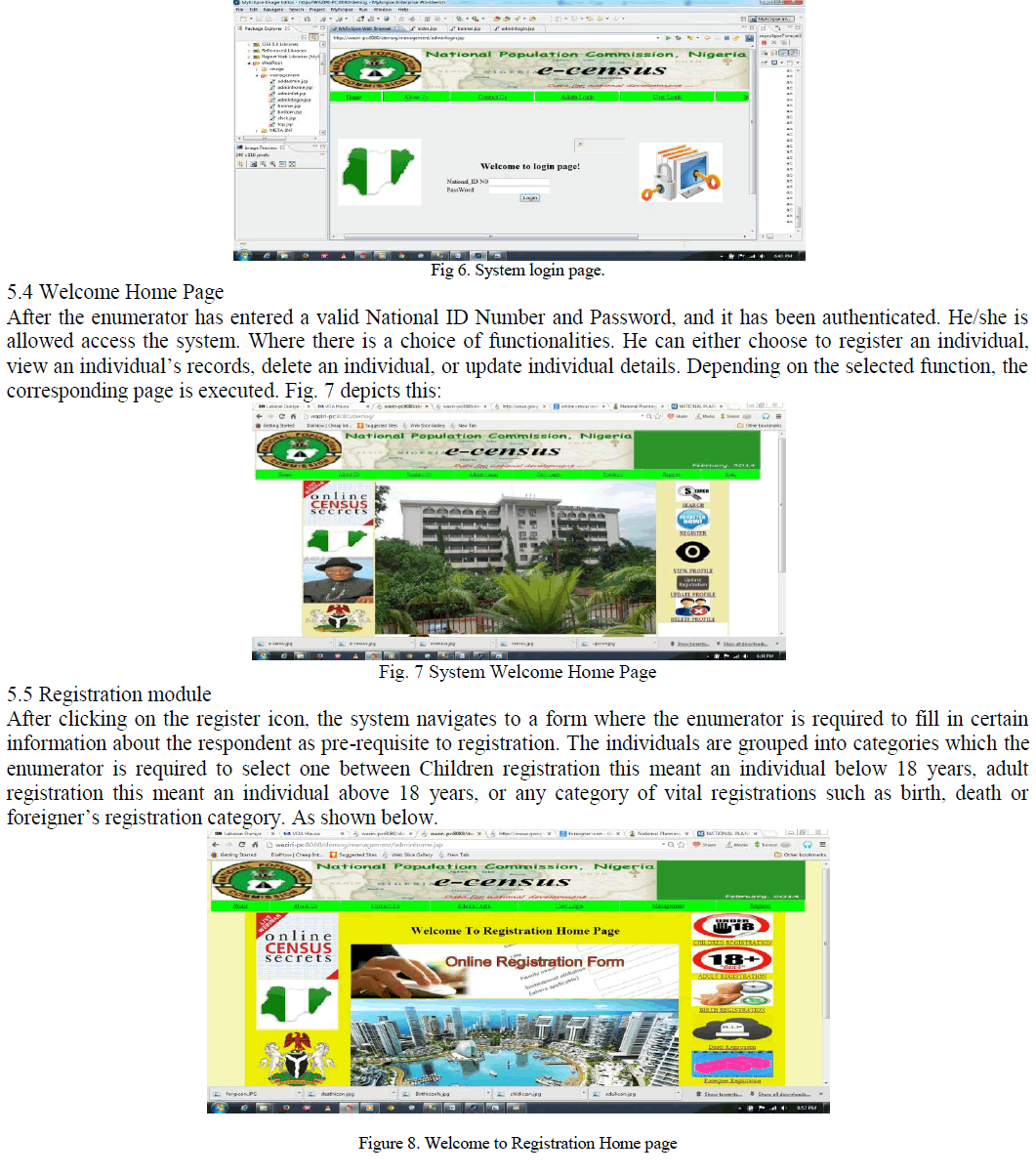 |
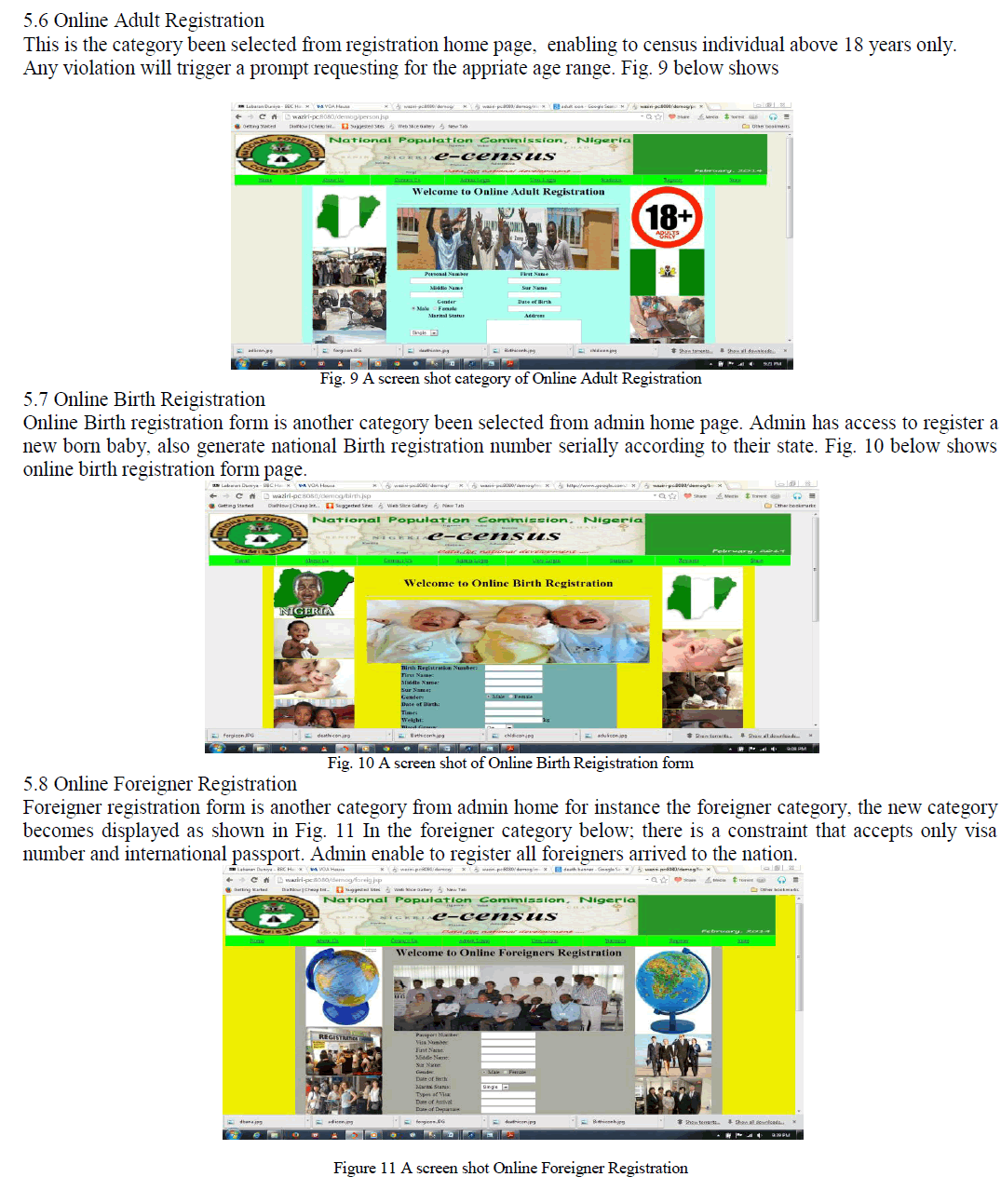 |
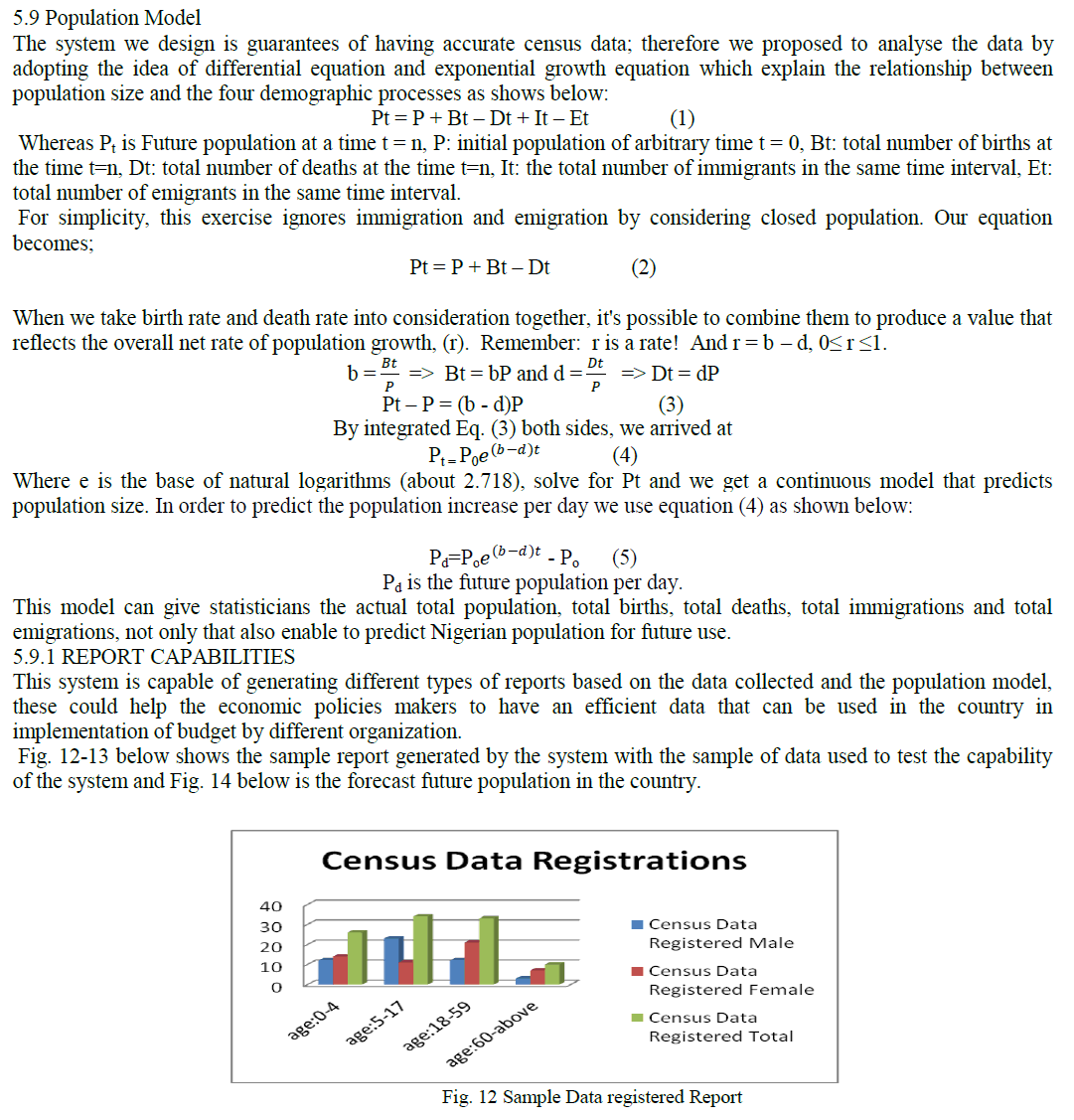 |
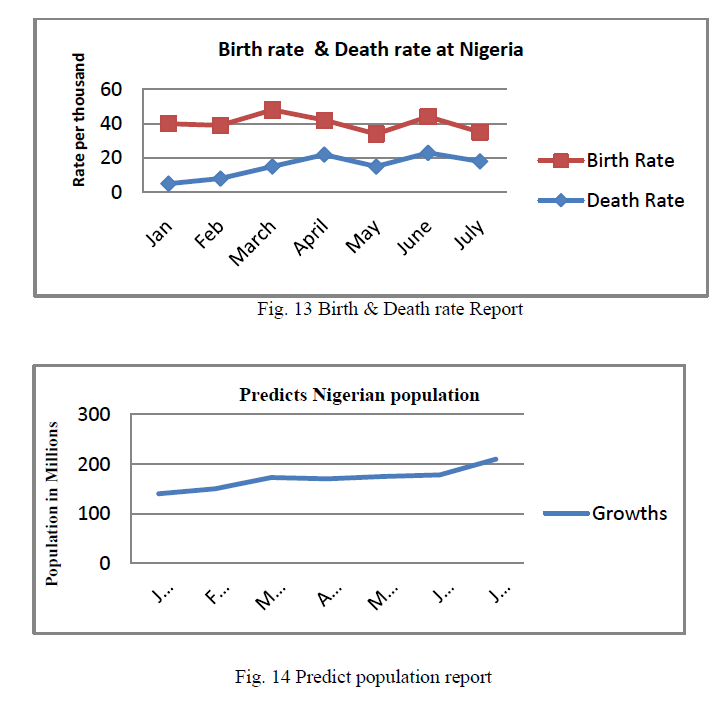 |
CONCLUSIONS |
| We have implemented the secure online census system base on browser-structure. It is our believe that with the adoption of this system prototype and implementation on a large scale, a guaranteed safe, secured and reliable to both the quality and use of data on the population census to encourage cooperation and collaboration among federal agencies by: |
| • Adopting the population model it could help the demographers to forecast and advise the government to plans for new generations. |
| • Widening access to information on the population census through periodic publications and other means. |
| • Promoting communication among data producers, researchers, and public policy- makers. |
| • Coordinating the development and use of statistical databases among federal agencies. |
| • Identifying information gaps and data inconsistencies. |
| • Encouraging cross-national research and data collection on the census. |
References |
|